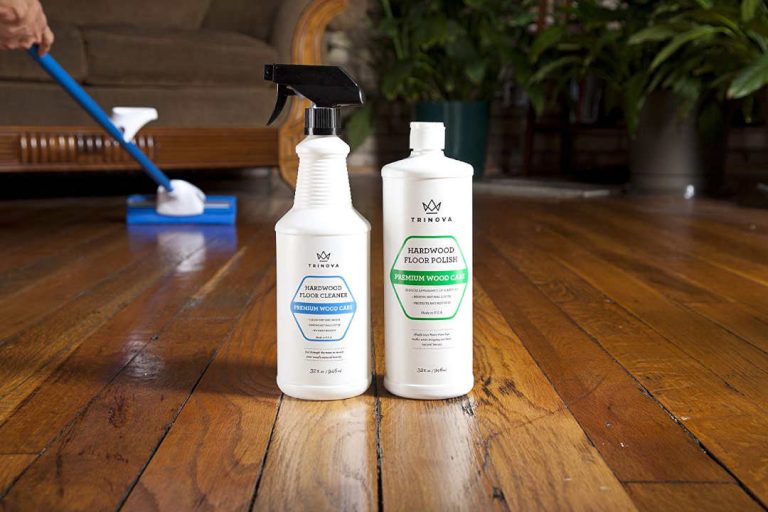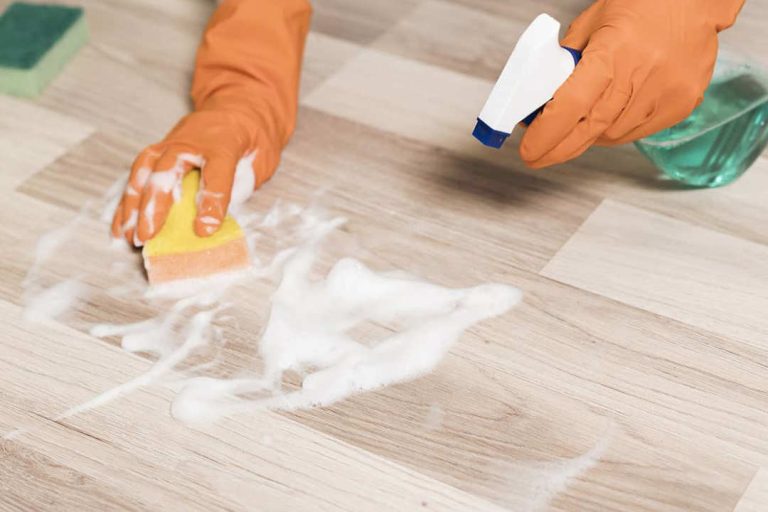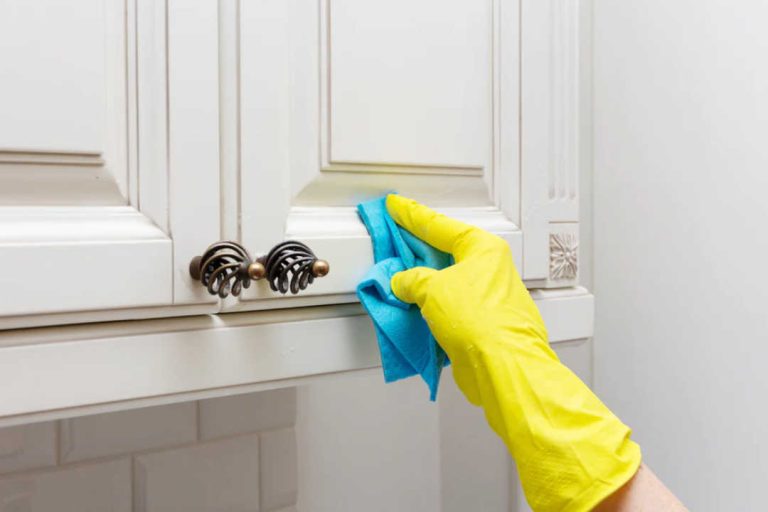Ah, the allure of white kitchen cabinets. Gleaming, crisp, and oh-so-chic, they promise an air of sophistication and modern elegance. But let’s be honest, the reality can be a touch more…dramatic. A splash of tomato sauce, a wayward grease splatter, and suddenly your pristine white haven becomes a battlefield of grime and discoloration. Fear not, weary warrior of the kitchen! For today, we unveil the secrets to conquering this seemingly impossible foe: white kitchen cabinets. No harsh chemicals, no endless scrubbing – just expert tips and cleaning solutions that will have your cabinets singing with newfound brilliance. So, grab your trusty microfiber cloth, summon your inner cleaning champion, and prepare to discover what to use to clean white kitchen cabinets and banish those stubborn stains forever!
Choosing the Right Cleaning Solutions
When it comes to keeping your white kitchen cabinets looking pristine, choosing the right cleaning solutions is essential. Not all products are created equal, and using the wrong ones can lead to damage or discoloration. In this section, we will explore the recommended methods to clean white kitchen cabinets, including safe solutions and natural cleaners that are gentle yet effective.
Safe Solutions for Cleaning White Kitchen Cabinets
It’s crucial to prioritize the safety of your white kitchen cabinets when selecting cleaning solutions. Harsh chemicals can strip away the finish or cause fading, so it’s best to opt for mild and safe alternatives. One option is to create a solution using warm water and a gentle dish soap. This combination helps to remove grease and grime without causing any harm to your cabinets.
Another safe and effective cleaning solution is white vinegar. Mix equal parts of white vinegar and water in a spray bottle, and use it to wipe down the surfaces of your cabinets. The acidity of vinegar helps to cut through grease and stains, leaving your cabinets clean and shiny.
Natural Cleaners for White Kitchen Cabinets
If you prefer using natural products, there are several options that are both safe and effective for cleaning white kitchen cabinets. One popular choice is baking soda. Create a paste by mixing baking soda with water, and apply it to stubborn stains or grime on your cabinets. Gently scrub the affected areas with a soft cloth or sponge, and then wipe clean with a damp cloth.
Lemon juice is another natural cleaner that can brighten and sanitize your white kitchen cabinets. Combine lemon juice with water in a spray bottle, and use it to wipe down the surfaces. The citric acid in lemon juice helps to break down grease and eliminate odors, leaving your cabinets fresh and clean.
- Warm water and gentle dish soap
- White vinegar solution
- Baking soda paste
- Lemon juice mix
By choosing the right cleaning solutions, such as these recommended methods, safe alternatives, and natural cleaners, you can effectively maintain the pristine appearance of your white kitchen cabinets.
Top Cleaning Products for White Kitchen Cabinets
When it comes to keeping your white kitchen cabinets clean and looking their best, choosing the right cleaning products is essential. With the proper cleaning techniques and high-quality products, you can easily maintain the pristine appearance of your cabinets. Here are some top cleaning products that are highly recommended for white kitchen cabinets:
1. All-Purpose Cleaner
An all-purpose cleaner is a versatile solution that can effectively remove grease, grime, and stains from your white kitchen cabinets. Look for a cleaner that is safe to use on various surfaces and does not contain harsh chemicals that can damage the finish of your cabinets. Apply the all-purpose cleaner to a soft cloth or sponge and gently scrub the cabinets, paying special attention to areas that are prone to dirt buildup.
2. White Vinegar
White vinegar is a natural and eco-friendly cleaning solution that can be used to clean and disinfect your white kitchen cabinets. Mix equal parts of white vinegar and water in a spray bottle and use it to wipe down the cabinets. The acidity of the vinegar helps to dissolve dirt and grime, leaving your cabinets sparkling clean. Remember to rinse with clean water and dry the cabinets thoroughly to avoid any residue.
3. Microfiber Cloths
Microfiber cloths are a must-have tool for cleaning white kitchen cabinets. These soft and lint-free cloths are perfect for dusting, wiping, and polishing the cabinets without leaving streaks or scratches. Use them with your chosen cleaning solution or simply dampen them with water for regular maintenance. Microfiber cloths are reusable and can be washed after use, making them a cost-effective and environmentally friendly option.
4. Grease-Cutting Dish Soap
If your white kitchen cabinets are prone to grease buildup, using a grease-cutting dish soap can help remove the tough stains. Apply a small amount of dish soap to a sponge or cloth and gently scrub the greasy areas. Rinse with warm water and dry thoroughly. Be sure to use a mild dish soap that is safe for your cabinets and avoid abrasive scrubbing pads that can cause scratches.
5. Baking Soda
Baking soda is a versatile and affordable cleaning agent that can be used to clean and deodorize your white kitchen cabinets. Create a paste by mixing baking soda with a small amount of water and apply it to stubborn stains or greasy areas. Gently scrub with a soft cloth or sponge, then rinse and dry the cabinets to reveal their natural shine. Baking soda is gentle enough not to damage the cabinet finish but strong enough to remove dirt and grime.
By using these top cleaning products and incorporating proper cleaning techniques, you can easily maintain the beauty and cleanliness of your white kitchen cabinets. Remember to follow the manufacturer’s instructions and test any new cleaning product on a small, inconspicuous area before applying it to the entire cabinet surface.
Recommended Cleaning Supplies for White Kitchen Cabinets
When it comes to maintaining the pristine look of your white kitchen cabinets, having the right cleaning supplies is essential. Here are the recommended tools and products that will help you achieve sparkling clean cabinets:
Cleaning Solutions:
- Gentle dish soap: Opt for a mild dish soap that is specifically formulated for delicate surfaces like wood or laminate.
- Vinegar and water solution: Mix equal parts vinegar and water to create a natural and effective cleaning solution for removing grease and grime.
- Baking soda paste: Combine baking soda with a little water to form a paste that works wonders in removing tough stains and restoring the shine of your cabinets.
Tools:
- Microfiber cloth: These soft and lint-free cloths are perfect for gently wiping down your cabinets without scratching the surface.
- Soft-bristle brush: Use a brush with soft bristles to reach into crevices and corners, ensuring a thorough clean.
- Sponge: A sponge with a non-abrasive side is ideal for tackling any stubborn stains without damaging your cabinets.
Polishing and Protecting:
- Furniture polish: Choose a furniture polish specifically designed for wood cabinets to add shine and protect the surface.
- Cabinet wax: Applying a thin layer of cabinet wax can provide an extra layer of protection against stains and spills.
Remember to always follow the manufacturer’s guidelines for specific cleaning and maintenance instructions. With these recommended cleaning supplies, you’ll be able to keep your white kitchen cabinets looking their best for years to come.
Conquer the Kitchen: Top Tips for Sparkling White Cabinets
Here are some tips for effectively cleaning white kitchen cabinets presented in a listicle format:
- Know Your Enemy: Identify your cabinet type (painted, laminate, etc.) and finish (glossy, matte) to choose the right cleaning weapons. Always test any solution in an inconspicuous spot first!
- Befriend the Microfiber: Ditch those scratchy sponges! Microfiber cloths are your gentle giants for dust removal, streak-free drying, and everyday cleaning.
- Water Works Wonders: For most messes, warm water and a microfiber cloth are your dynamic duo. Tackle spills and splatters immediately to prevent stubborn stains.
- Baking Soda Bonanza: This natural hero tackles light grease and grime. Make a paste with water or sprinkle it on stubborn areas, then wipe clean with a damp cloth.
- Vinegar Power: Diluted white vinegar cuts through grease and shines up surfaces. Use a spray bottle for targeted application and avoid using on marble or granite countertops.
- Lemon Love: This natural disinfectant and stain fighter works wonders on watermarks and light stains. Combine equal parts lemon juice and water, or rub a lemon wedge directly on the stain.
- Castile Soap Savior: This gentle cleanser is safe for most surfaces and effective against greasy messes. Mix a few drops with water in a spray bottle for an all-purpose cleaning solution.
- DIY Deep Clean Paste: Combine baking soda, water, and a few drops of castile soap for a powerful paste to tackle tough stains. Apply, let sit briefly, then scrub gently with a soft brush and rinse well.
- Preventative Strike: Good ventilation is key! Use your exhaust fan while cooking to minimize grease buildup. Store cleaning supplies nearby for quick touch-ups, and wipe down cabinet handles regularly.
- Skip the Harsh Stuff: Avoid harsh chemicals and abrasive cleaners, which can damage your cabinets. Natural solutions are often just as effective and gentler on both surfaces and your wallet.
Bonus Tip: For extra shine, buff your cabinets with a microfiber cloth after cleaning. Remember, consistency is key! Regular cleaning will keep your white cabinets sparkling for years to come.
Conclusion
In conclusion, maintaining the cleanliness and beauty of white kitchen cabinets requires regular cleaning and maintenance. The tips and recommendations provided in this article offer valuable insights into how to effectively clean and care for your cabinets.
Using the right cleaning solutions is crucial to avoid damaging the surfaces of your cabinets. It is recommended to opt for safe and natural cleaners that are gentle yet effective. These cleaners will help to remove dirt, grease, and stains without causing any discoloration or damage.
Additionally, investing in top-quality cleaning products and supplies is essential. The proper tools and techniques are key to ensuring a thorough cleaning and preventing scratches or other forms of damage. By following these recommendations, you can maintain the pristine look of your white kitchen cabinets for years to come.
FAQ
What cleaning products should I use to clean white kitchen cabinets?
When it comes to cleaning white kitchen cabinets, it’s important to use gentle yet effective cleaning products. Opt for mild dish soap or a cleaner specifically designed for wood surfaces. Avoid harsh chemicals or abrasive cleaners that can damage the cabinet finish.
What are the best cleaners for white kitchen cabinets?
The best cleaners for white kitchen cabinets are those that are specifically formulated for wood surfaces and are safe to use on painted finishes. Look for cleaners that are non-toxic, non-abrasive, and pH-balanced to ensure they won’t cause any damage or discoloration.
What are the most effective cleaning products for white kitchen cabinets?
Some of the most effective cleaning products for white kitchen cabinets include white vinegar, baking soda, and lemon juice. These natural cleaners can help remove grease, stains, and grime without causing any damage. Just be sure to dilute them properly and test them on a small, inconspicuous area before using them on the entire cabinet surface.
What are the recommended methods to clean white kitchen cabinets?
The recommended methods to clean white kitchen cabinets include using a soft cloth or sponge soaked in a mild cleaning solution to gently wipe down the cabinets. Avoid scrubbing too vigorously, as this can damage the finish. Additionally, make sure to dry the cabinets thoroughly after cleaning to prevent moisture damage.
Are there any safe solutions for cleaning white kitchen cabinets?
Yes, there are several safe solutions for cleaning white kitchen cabinets. As mentioned earlier, mild dish soap or a cleaner specifically formulated for wood surfaces is a safe option. You can also create a DIY solution using equal parts white vinegar and water, or a mixture of baking soda and water.
What are some natural cleaners for white kitchen cabinets?
Natural cleaners for white kitchen cabinets include white vinegar, baking soda, lemon juice, and olive oil. These ingredients are safe to use, environmentally friendly, and effective at removing dirt and grime. Just be sure to follow the directions for each cleaning solution and test them on a small area first.
What are some easy ways to clean white kitchen cabinets?
Some easy ways to clean white kitchen cabinets include using a mild dish soap and water solution, wiping down the cabinets with a soft cloth or sponge, and thoroughly drying them after cleaning. You can also use natural cleaners like white vinegar or baking soda for an easy and effective cleaning solution.
What are the top cleaning products for white kitchen cabinets?
The top cleaning products for white kitchen cabinets include popular brands such as Murphy’s Oil Soap, Method Wood for Good, and Bona Cabinet Cleaner. These products are specifically designed for wood surfaces and are proven to be effective at removing dirt, grease, and grime without causing any damage.
What are the proper cleaning techniques for white kitchen cabinets?
The proper cleaning techniques for white kitchen cabinets include using a soft cloth or sponge to wipe down the cabinets in the direction of the wood grain. Avoid scrubbing too vigorously, as this can damage the finish. Additionally, make sure to dry the cabinets thoroughly to prevent moisture damage.
What are the recommended cleaning supplies for white kitchen cabinets?
The recommended cleaning supplies for white kitchen cabinets include a soft cloth or sponge, a mild dish soap or wood cleaner, a bucket or basin for mixing the cleaning solution, and a microfiber cloth or chamois for drying the cabinets. It’s also helpful to have a toothbrush or small brush for cleaning hard-to-reach areas.
- How to Clean Kitchen Floor Grout Naturally: Easy DIY Methods - June 25, 2024
- How to Clean Thermoplastic Kitchen Cabinets Properly: Expert Tips - June 19, 2024
- How to Clean Mica Kitchen Cabinets: A Simple Guide - June 19, 2024






![How Do I Clean a Modular Kitchen Cabinet? [Complete Guide]](https://cleaningcarekits.com/wp-content/uploads/2023/06/how-do-I-clean-a-modular-kitchen-cabinet-768x512.jpg)